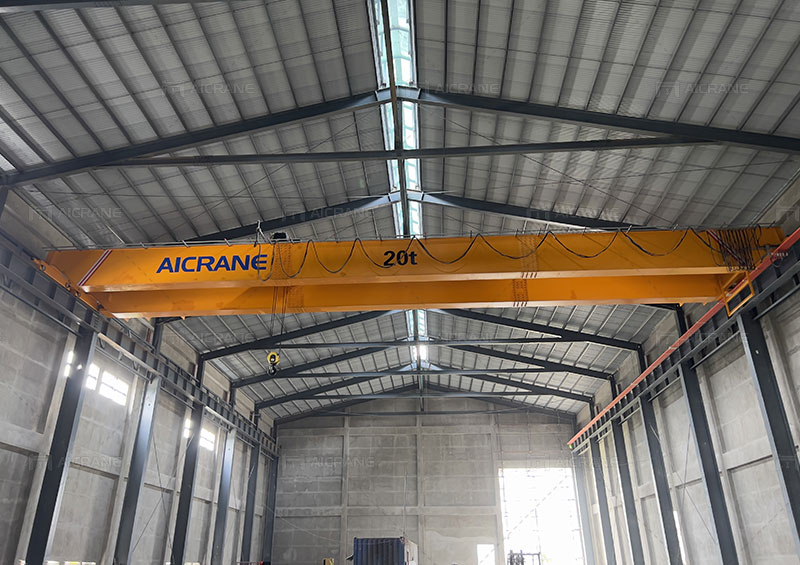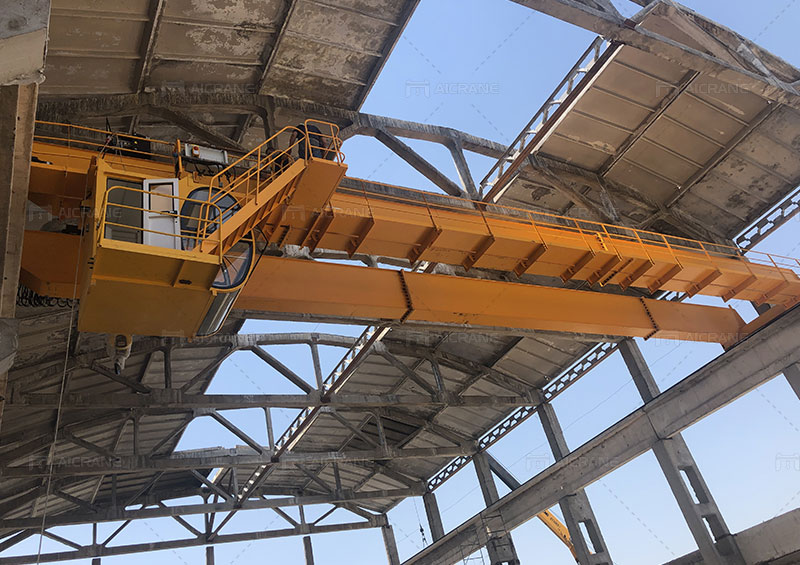Double girder Electric Overhead Traveling (EOT) cranes are an essential part of many industrial operations, especially in heavy-duty manufacturing, steel mills, warehouses, and construction sites. These cranes are designed to lift and move extremely heavy loads across vast distances, but to optimize performance, enhancing both precision and speed is crucial. Efficient operations not only improve productivity but also reduce costs and increase safety in the workplace.
In this article, we will explore several strategies and technologies that can be used to improve the precision and speed of double girder EOT crane, addressing key areas such as design, control systems, maintenance, and operator training.

1. Upgrade the Control System
The control system is at the heart of any crane’s performance, and modernizing or upgrading this system can greatly enhance both speed and precision. Most traditional EOT cranes operate with basic control mechanisms that allow the operator to move the crane at a fixed speed. However, with the introduction of advanced technologies, such as variable frequency drives (VFD) and intelligent control systems, precision and speed can be significantly improved.
Variable Frequency Drives (VFD): VFDs control the speed of the motors by adjusting the frequency of the electrical supply, which helps in achieving smooth and controlled movement. This results in a reduction of jerky movements during crane operations, increasing precision. VFDs also allow the crane to operate at different speeds depending on the load, which is critical for enhancing both lifting speed and load precision.
Intelligent Control Systems: Modern EOT cranes can be equipped with intelligent control systems that provide operators with real-time feedback and advanced control over the crane’s movements. For example, load moment indicators (LMIs) can prevent overloads, and anti-sway technologies can help improve precision when lifting heavy loads. Additionally, integrated systems allow operators to pre-set crane parameters for specific tasks, which reduces human error and ensures consistent, precise movements.
2. Incorporate Anti-Sway Technology
Swaying is a common challenge in double girder overhead crane operations, especially when moving heavy loads. The swinging of a load can not only slow down the crane’s operation but also lead to imprecise placement and safety risks. Incorporating anti-sway technology can drastically reduce this issue.
Active Anti-Sway Systems: Active anti-sway systems use sensors and actuators to detect the load’s motion and automatically adjust the crane’s movements to counteract any swinging. This system adjusts the crane’s speed and direction in real time, allowing for precise placement even at high speeds. By minimizing sway, the load is kept stable during transport, ensuring that the crane operates faster and more accurately.
Advanced Hoist Systems: Upgrading the hoist mechanism with smoother, more precise control systems can also reduce sway. Electric hoists equipped with advanced braking systems allow for finer control, which is particularly important when moving large, heavy loads. This technology minimizes the abrupt stops and starts that can lead to swinging.

3. Improve the Mechanical Design
The mechanical design of the crane, including the girders, hoist, trolley, and end carriages, plays a vital role in both speed and precision. Optimizing these elements for smoother operation can significantly improve performance.
High-Quality Components: The use of high-quality, precision-engineered components, such as bearings, motors, and gearboxes, can increase the overall efficiency of the crane. For example, roller bearings with low friction provide smoother motion, while gearboxes with higher efficiency reduce power loss and allow for quicker movement.
Lightweight Materials: Using lightweight, high-strength materials for components like the girders and hoists can reduce the overall weight of the crane, allowing for faster speeds and improved load handling. Modern materials such as aluminum alloys and carbon composites offer the necessary strength while reducing the weight of the crane’s structure, leading to more responsive and precise movements.
Optimized Gearing Systems: The gear reduction ratio directly affects both speed and precision. A higher gear ratio generally increases speed but reduces precision, while a lower ratio offers finer control but may decrease speed. By adjusting the gear ratio to suit specific applications and optimizing it for variable speeds, you can balance both speed and precision effectively.
4. Use of High-Precision Sensors and Feedback Systems
Precision is not only about moving the overhead bridge crane but also about accurately knowing where it is and where it is going. High-precision sensors and feedback systems can provide real-time data that helps improve the crane’s accuracy.
Positioning Systems: Incorporating laser or RFID-based positioning systems allows the crane to monitor its exact location within the operating environment. By continuously tracking the crane’s position, operators can avoid overshooting or missing the intended placement. This technology can improve load accuracy and ensure that the crane operates more efficiently, without wasting time on corrections.
Load Sensors: Load sensors on the crane’s hook or trolley can provide valuable data on the weight of the load being lifted. This information helps in adjusting the crane’s operation speed to match the load. By optimizing the speed based on the weight, the crane can perform faster without compromising precision, preventing damage to both the load and the crane.
5. Implement High-Performance Lubrication Systems
Maintaining smooth operation is key to both speed and precision. Implementing a high-performance lubrication system reduces friction and wear on the crane’s components, allowing for faster, more precise movements. Automated lubrication systems can ensure that all moving parts are well-lubricated, extending the lifespan of the crane and maintaining its performance.
Regular lubrication not only reduces downtime caused by maintenance but also improves the overall smoothness of the crane’s movements. This leads to less resistance and higher operational speeds, all while maintaining precise control.
6. Operator Training and Skill Enhancement
Even with advanced technologies, the skill and experience of the crane operator remain crucial to achieving both speed and precision. Providing comprehensive training for crane operators on how to use advanced controls, safety systems, and anti-sway technologies ensures that they are equipped to perform efficiently.
Simulator Training: Simulator-based training allows operators to practice operating cranes in a safe, controlled environment. This can help them understand how to control the crane at different speeds, how to deal with precise load placements, and how to prevent issues like load sway. Such training programs can significantly enhance the operator’s ability to manage the top running crane effectively, increasing both speed and accuracy.
On-the-job Experience: In addition to formal training, giving operators more hands-on experience allows them to become more familiar with the specific nuances of their cranes, which further enhances their precision and speed in real-world scenarios.
7. Regular Maintenance and Inspections
Regular maintenance and inspections are essential for ensuring that all crane components are functioning at optimal performance. Well-maintained equipment runs more smoothly, operates faster, and provides better precision. Routine checks on the crane’s electrical systems, mechanical parts, and safety features will prevent the degradation of performance over time.
By maintaining your crane regularly, you reduce the risk of costly repairs, unplanned downtime, and efficiency losses. Ensuring that all components are in top condition keeps the crane performing at its best.
Conclusion
Improving the precision and speed of double girder EOT cranes involves a combination of advanced technology, mechanical optimization, and operator expertise. Upgrading control systems, incorporating anti-sway technologies, improving crane design, and using high-precision sensors all contribute to enhanced performance. Additionally, continuous operator training and regular maintenance ensure that the crane operates at peak efficiency over time.
By investing in these upgrades and improvements, industries can achieve faster, more accurate operations, which lead to higher productivity, reduced downtime, and better safety in the workplace.